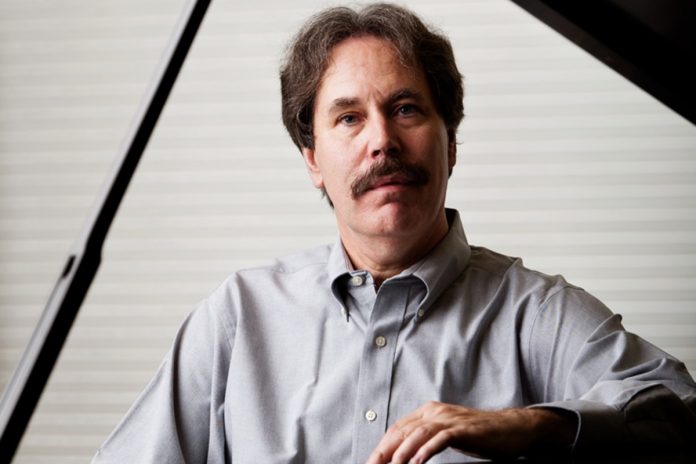1
Mainstream literary fiction is falling to pieces.
2
This may not be a bad thing.
3
The fragmented novel has been a mainstay of the literary world for the last century. But a new type of fragmentation has come to the forefront in 21st century novels such as Jennifer Egan’s A Visit from the Goon Squad (2010), David Mitchell’s Cloud Atlas (2004), Roberto Bolaño’s 2666 (2004), Ian McEwan’s Atonement (2001), Geraldine Brooks’s The People of the Book (2008), Hari Kunzru’s Gods Without Men (2102), T.C. Boyle’s When the Killing’s Done (2011), David Foster Wallace’s The Pale King (2011), Zadie Smith’s NW (2102), Audrey Niffenegger’s The Time Travelers Wife (2003), and other recent works.
Instead of relying on fragmentation as a means of disjunction and dissolution, as many experimental novelists had done in the past—Julio Cortázar, William Burroughs, J.G. Ballard, Gilbert Sorrentino, etc. – the new fragmented novel is holistic and coalescent. It resists disunity, even as it appears to embody it.
4
Michael David Lukas, trying to come to grips with this same tendency, has noted the emergence of a new type of fiction distinguished by its “multiplicity of voices.”
“A strange literary beast has re-emerged,” he writes, ” a hybrid of the short story and traditional novel. This newly reinvigorated genre — let’s call it the polyphonic novel.”
The comparison with musical polyphony is fitting because, as with the counterpoint, the voices in these recent novels are made to fit together with a virtuosity akin to that demonstrated by the great contrapuntal composers.
Instead of “messy cacophony” these novels delight with their complicated coherence.
5
Yet Lukas focuses on only one aspect of this new literary trend. These novels do not simply delight us with their contrasting voices. They also send us through an enjoyable labyrinth. The books he describes are filled with sharp turns and apparent dead ends, yet we always reach our final destination. Their authors are not just displaying virtuosity in creating a range of voices, but also showing off their ingenuity in building coherent narratives out of starkly juxtaposed bits and pieces.
Or, put differently, previous attempts to create fragmented novels tended to emphasize content over form. The current tendency in the fragmented novel is to exhibit a relentless formalism even while, at a superficial level, the books seem to reject it.
6
Jennifer Egan’s A Visit from the Goon Squad provides an illuminating example of this. Every chapter presents a radical disjunction. The main character changes, the plot changes, the prose style changes. But only after we complete the book do we realize that Egan has actually continued and completed every one of these abandoned plots. Each story is given closure in the background of the succeeding chapters.
The abandonment of form has been an illusion. Egan has been in control all the time.
A similar hidden coherence emerges again and again in many of the most influential 21st century novels, such as Cloud Atlas or Atonement. The books appear loose, but are actually tight. They come to our hands masquerading as postmodern pastiches, even as they reject most of the tenets of postmodernism.
7
This is a remarkable turn of events. And it is clearly related to the shift in how authors’ reputations are made nowadays.
A generation ago, academic critics decided who the ‘most important novelists’ were. Nowadays, literary stars are made by the teachers and students at MFA writing programs.
When academic literary critics ruled the roost, they prized texts that were recondite and suitable vehicles for interpretation by (yes, you guessed it) academic literary critics. The writers in the MFA programs appreciate these works too, but give more attention to elements of craftsmanship—plotting, dialogue, pacing and other nuts-and-bolts matters that academic critics have downplayed in recent decades.
When I was a student of literature, my professors—who were academic literary critics, not fiction writers—almost never mentioned these elements of craft. I remember one professor even going on a rant in class about students who paid too much attention to the plot of the novel. He had more important matters in mind when he read a book than the actual story. Meanwhile, a completely different set of concerns were on the minds of those involved in the university’s ‘creative writing’ program. I was told that one teacher in this program even required students to write a “supermarket novel,” thus forcing them to pay attention to all the ingredients necessary to get a book placed prominently in the rack in front of the checkout aisle at Safeway.
It was hard to believe that two such different approaches to fiction could be championed at the same time at the same university. Something would have to give.
8
But, strange to say, nothing had to give.
The beauty of the new fragmented novel is that writers can have it both ways. These books pay deference to complexity, that deity of the lit critic, but they are also marked by an intense devotion to plot, pacing and other elements of traditional craft. Highbrow and lowbrow elements are pleasingly blurred. Experimentation proves that it is compatible with accessibility.
I am attracted to these books—and I suspect others are as well—because of their skill in serving such conflicting masters, and without obvious compromises.
9
A passing note: The fragmented narrative is not just a trend in literary fiction. In 1978, a typical 30-second TV commercial had a camera cut every 3.8 seconds. By 1991, these same commercials inserted a camera cut every 2.3 seconds. Yet music videos were adopting an ever more rapid pace, featuring a cut every 1.6 seconds.
Fiction is responding to these changes, rather than initiating them. Almost all of the arts now aspire to a pleasing sense of dislocation.
10
The fragmented novel has gone through three phases in modern times. Sherwood Anderson’s Winesburg Ohio (1919) exemplifies the early attempts to take a series of short stories and turn them into a novel. A. E. van Vogt gave this approach a name—he called it the “fix-up” and he built his own reputation on repackaging his pulp fiction short stories into books that resembled, more or less, science fiction novels.
Van Vogt’s motivation was primarily financial. “A novel would sell whereas the individual stories seldom did,” he explained to an interviewer. “Hence, the great thought came; and the fix-up novels began.” The obvious advantage was that van Vogt could sell the same piece of writing twice. As for those who attacked him for peddling second-hand goods in his novels, the author countered: “I could only shake my head over these people; to me, they were obviously dilettantes who didn’t understand the economics of writing science fiction.”
11
Yet the “fix-up” approach is capable of producing literary works of the highest merit. Some of the greatest ‘novels’ of the 20th century could be classified as ‘fix-ups’—master-pieces such as Faulkner’s Go Down, Moses or Tim O’Brien’s The Things They Carried. The ‘Winesburg strategy’ continues to find advocates in the current day. Elizabeth Strout’s Olive Kitteridge, winner of the Pulitzer Prize in 2009 and Tom Rachman’s The Imperfectionists (2010) have more in common with the old Sherwood Anderson type of fragmented novel than with the works by Egan, Mitchell and others discussed above. But these turbocharged fix-ups also contribute to the ascendancy of this new aesthetic of collage and juxtaposition.
12
Jay McInerney recently remarked: “I suspect that if Dubliners had been published in recent years it would have been marketed as a novel.”
13
Experimental novelists rediscovered the fragmented novel in the late 1950s. But their conception was diametrically opposed to that of Sherwood Anderson and other practitioners of the ‘fix-up’ and bears only a superficial connection to the new style of fragmented novel exemplified by Egan, Mitchell and others. The avant-garde of the 1950s and 1960s did not want their textual fragments fit together, and devised a host of new methods to create a sense of dislocation and discontinuity among readers.
At an extreme, William Burroughs employed his “cut-up” method that brought a degree of deliberate randomness into his prose. Burroughs didn’t invent the technique—back in the 1920s, Dadaist Tristan Tzara announced that poetry could be created by pulling words out of a hat. Literally out of a hat, a black magician’s hat in Tzara’s case. John Dos Passos dispensed with the hat, but experimented in the 1930s with comparable techniques, inserting newspaper head-lines and bits of articles or songs into his U.S.A. Trilogy. Doris Lessing would later do something similar in The Golden Notebook (1962) and, in my opinion, achieved better results than Dos Passos. J.G. Ballard took the same approach in The Atrocity Exhibition—and it was revealing that he asked Burroughs, the most extreme exponent of the cut-up (as opposed to the fix-up) to write an introduction to a later edition of this novel.
14
The postmodern turn in literature left us with a host of techniques for turning a novel into bits of semantic shrapnel.
These books made strange, unprecedented demands on their readers. At the beginning of Hopscotch, Julio Cortázar suggests a non-sequential way of proceeding through his novel, starting with chapter 73 and ending with chapter 131.
J.G. Ballard takes an even stranger approach in The Atrocity Exhibition. “Rather than start at the beginning of each chapter, “he writes in his introduction, “simply turn the pages until a paragraph catches your eye.” Italo Calvino continually entices his reader into expecting some degree of narrative continuity in If On a Winter’s Night a Traveler, only to disrupt the process with constant obstacles and interruptions. At the other extreme, Raymond Queneau tells the same tedious story over and over again 99 times in his Exercises in Style. In Pale Fire, Vladimir Nabokov hid his novel in a text that masqueraded as an academic’s annotation of a work of modern poetry.
15
Non-fiction also contributed new techniques. Roland Barthes published his autobiography in 1975, and broke it up into fragments that were organized in alphabetical order.
Not long after this work was translated into English, a friend told me that he wanted to try the same approach in a novel. He would write chapters that would have simple, descriptive titles, and then these chapters would be arranged in order from A to Z.
“The key,” he admitted, “is for the climactic scene to take place at a zoo.”
But what my friend suggested in humour soon became reality.
Milorad Pavić, published his Dictionary of the Khazars in 1984—and here the novelist surpasses Barthes by including three separate and contradictory narratives in his book, each disguised as a lexicon in alphabetical order.
The only thing Pavić missed was the zoo.
16
“I wanted very much to accept his offer of the American rights but as my capacity is limited, and short stories in book form do not sell well in America I reluctantly abandoned the idea.”
( From Bernard Huebsch’s rejection letter for James Joyce’s Dubliners.)
17
But the most prominent non-fiction role model for the fragmented novel came from Ludwig Wittgenstein, whose Tractatus Logico-Philosophicus had long bewitched, bothered and bewildered readers with its numbered statements that ostensibly presented a coherent philosophy, but could also be read as an extravagant type of poetry.
Wittgenstein offered sublime pronouncements, such as:
1.21 Each item can be the case or not the case while everything else remains the same.
or
2.027 Objects, the unalterable, and the substantial are one and the same.
These kind of statements, as far as I can see, really aren’t much different from:
A man and a woman
Are one.
A man and a woman and a blackbird
Are one.
So who can be surprised when experimental authors drew explicit comparison between their works and the Tractatus?
If fragmentation were more than just a game storytellers played and could actually stake a claim for its superior grasp of reality, then Wittgenstein was the prophet and systematizer who provided a philosophy to complement the fractured narratives of the postmodern novelists.
18
But the two most prominent postmodern novels with explicit reference to Wittgenstein’s Tractatus—Philip K. Dick’s VALIS and David Markson’s Wittgenstein’s Mistress—both featured narrators who are mentally disturbed.
So does the Tractatus-as-role-model take us closer to realism or further away?
19
The fractured works of the current day represent the third stage in the evolution of the fragmented novel. The first stage focused on the fix-up. The second stage introduced the cut-up. The third and perhaps final stage seeks an exemplary wholeness, a fitting together of the fragments into brilliant patterns. It does not court randomness or glorify schizophrenia.
The fragments here are not shrapnel. More like pieces of a glorious jigsaw puzzle.
20
Indeed, the first work of fiction to explore this technique, predating the rise of the new fragmented novel, is actually about jigsaw puzzles. Georges Perec’s Life A User’’ Manual (1978) tells the story of a wealthy eccentric who is obsessed with these puzzles, and they serve as a ruling metaphor for the book, both a unifying element of plot, and a structural blueprint for Perec’s fictional account of the activities inside a Parisian apartment block on June 23, 1975.
When it was published, Perec’s work was hardly seen as a harbinger of the future of mainstream literary fiction. More the quirky effort of a writer every bit as eccentric as the people he describes in his novels. Yet fast-forward a generation, and Life A User’s Manual would be very much at home in a literary culture that turns Cloud Atlas into a Tom Hanks movie and awards a Pulitzer Prize to A Visit from the Goon Squad.
21
But if I had to pick a milestone moment when the new style of fragmentation emerged, I would pinpoint the release of Don DeLillo’s Underworld in 1997. In 2006, when the New York Times asked authors and critics to vote for the best work of American fiction of the last 25 years, DeLillo’s 800-page behemoth finished second, trailing only Toni Morrison’s Beloved. I suspect that these voters responded, as did I, to DeLillo’s extraordinary skill in presenting a story that was sprawling and multivalent, yet also meticulously controlled and orchestrated.
At the time of its publication, Underworld must have seemed a one-of-a-kind book, but with the passing years we can see how this novel anticipated many later developments. And not just in terms of how to impart structure and solidity to a fragmented novel. The cover of DeLillo’s novel featured an ominous photograph of the Twin Towers, all this before their own horrifying fragmentation just four years later.
Somehow this book managed to be a 9/11 novel avant la lettre. Michiko Kakutani was hardly exaggerating when she announced in 2011 that Underworld “not only captured the surreal weirdness of life in the second half of the 20th century but also anticipated America’s lurch into the terror and exigencies of the new millennium.”
22
“More and more, I read in pieces. So do you. Digital media, in all its forms, is fragmentary. Even the longest stretches of text online are broken up with hyperlinks or other interactive elements (or even ads). This is neither a good nor bad thing, necessarily — it is simply a part of modern reading.”
( Guy Patrick Cunningham, “Fragmentary: Writing in a Digital Age”)
23
It’s no coincidence that the legitimization of comic books —now referred to as graphic novels—has taken place during the same period that mainstream literary fiction has grown increasingly fragmented. The white panels (or ‘gutters’) that separate the frames of the graphic novel are much like the gaps that now break up prose narratives.
“The use of gutters,” writes Naomi Pallas, “draws attention to the fragmentary nature of [comic book] narratives, and allows the authors to explore dynamic elements such as crumbling memories onto the page.”
The graphic novel, like the current incarnation of the fragmented novel, seeks to create an impression of continuity and flow even while its basic structural device is one of separation and discontinuity. So the legitimization of these once despised ‘comic books’ is not just another elevation of pop culture into the realm of the mid-brow and high-brow. It also signals a convergence between literary fiction and graphic narratives. A similar type of formalism prevails in both idioms.
24
In 2009, Matt Stewart announced his plan to tweet his entire debut novel The French Revolution in bite-sized 140-character tidbits. He started on Bastille Day and finished four months later on October 21, 2009. His book, originally consisting of approximately 3,700 tweets, was later published in conventional print format by Soft Skull Press.
Many other authors have followed up on the promise of the tweet novel. Meanwhile in Japan, mobile phone novels, known as keitai shousetsu, have become bestsellers.
These downsized ‘books’, with chapters of around 70-100 words, have spawned a new business model for publishing and distributing fiction.
25
All experimental approaches in the arts can perhaps be divided into two categories—experiments of disjunction or experiments of compression. Either things get pushed apart, or get squeezed together. Either an aesthetic of disintegration, or an aesthetic of wave-like flow.
This dichotomy exists outside progressive fiction, perhaps finding a place in every art form. Think of Thelonious Monk as the jazzman of fragmentation, and Bill Evans as his opposite, the exponent of immersive flow. Or compare the brusque confronting shapes of cubism versus the gradient palette of impressionism. Or contrast the visual flow of Stanley Kubrick (every film has at least one long unspliced tracking shot) and Terrence Malick with the choppy, in-your-face approach of Quentin Tarantino and the French New Wave directors.
It was the destiny of avant-garde fiction during most of the 20th century to favor the flow style, instead of the disjunctive approach. James Joyce played the decisive role in this history. His advocacy of stream-of-consciousness changed the course of fiction for almost a half-century. Joyce made clear the exciting potential for a new kind of novel, in which all dividing lines—whether of punctuation or psychology, plot or theme—could be torn asunder. This interpretation of 20th century literature may not be entirely fair to Joyce (who claimed that Ulysses represented more than a stream-of -consciousness novel, and offered “eighteen different points of view and in as many styles, all apparently unknown or undiscovered by my fellow tradesmen”) but, for better or worse, this was how he was perceived by the next generation. Along with other masters of a flow approach (Faulkner, Woolf, Proust), Joyce set the tone for avant-garde writers of the next two generations.
The postmodern boom of the 1970s and 1980s made the first dent in this aesthetic. None of these authors had the same cachet as their illustrious predecessors. Italo Calvino is not Joyce; Paul Auster is not Faulkner. But they planted a seed, and set an example that is now influencing the current exponents of literary fiction. Yet here’s the unexpected twist: the techniques of disjunction and fragmentation, once pursued as part of an avant-garde movement, have been tamed and subdued. In short, they have gone mainstream.
26
Yes, the literary novel is falling to pieces. And I’ll predict that this process still has a long way to go. The fact that the publishing business is also falling to pieces—albeit in a different way—may only accentuate the trend, as writers embrace pointillistic do-it-yourself media to present their deliberately broken wares to an audience that has grown up on bite-sized fare.
Yes, at some point all trends reverse, and today’s quest for a pleasing disjunction may well be replaced by a subsequent taste for smoother narratives. But that’s probably still years off in the future. In the current moment, nothing seems less likely than the rise of a literary community that embraces homogenized forms of fiction. Most of us are deeply suspicious of proffered unities nowadays—and for a good reason, no? Been there, done that. Tidy narratives have become the domain of politicians and ideologues. As for the rest of us…well, we’ve all gotten on our knees and prayed we won’t get fooled again. So let’s grab on to the next best alternative. Let’s try to stack our bits and pieces into pleasing wholes that approximate a unity. This just might be good enough until something better comes along.
______________________________________________________________
Acknowledgement:
Above article is republished with permission from the author.
About the author:
Ted Gioia is a musician and author, and has published ten non-fiction books. Gioia also reviews contemporary fiction for various periodicals. Gioia was raised in a Sicilian-Mexican household in Hawthorne, California, a working class neighbourhood in the South-Central area of Los Angeles and has enjoyed successes in the worlds of writing, music and business.
















